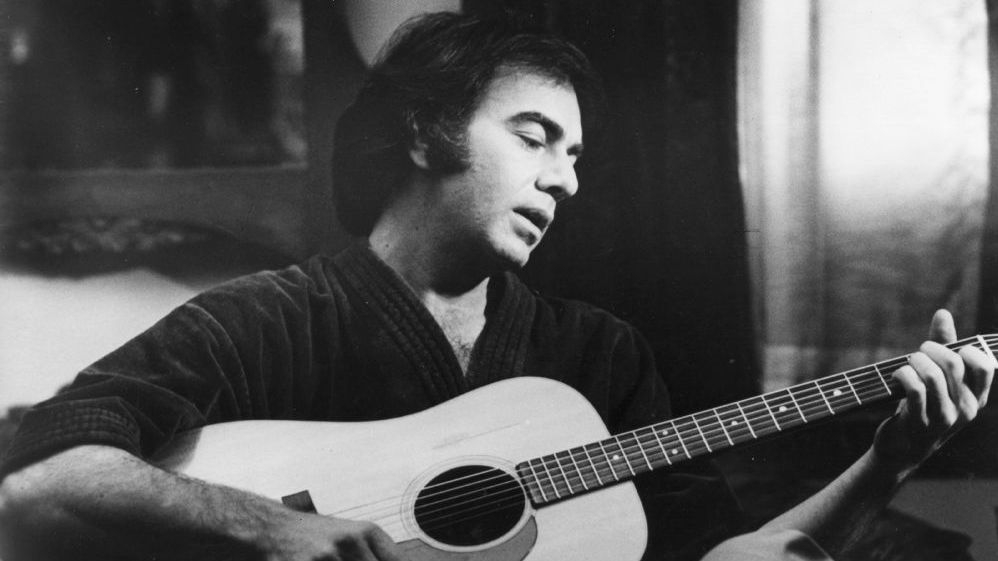
A Nostalgic Ode to Simpler Times: “Sweet Caroline” by Neil Diamond
In the vast tapestry of music history, few songs capture the essence of nostalgia as profoundly as “Sweet Caroline” by Neil Diamond. Released in 1969, this timeless classic has woven itself into the fabric of American culture, evoking memories and emotions that span generations. Its journey on the charts was nothing short of remarkable, peaking at No. 4 on the Billboard Hot 100 in August of that year. But beyond its commercial success, “Sweet Caroline” resonates with an emotional depth that transcends mere numbers.
The story behind “Sweet Caroline” is as enchanting as the song itself. Neil Diamond, a masterful storyteller and musician, found inspiration for this iconic tune in an unexpected moment of reflection. Legend has it that Diamond was struck by a photograph of Caroline Kennedy, the daughter of President John F. Kennedy, which he saw in a magazine. The innocence and charm captured in that image sparked a creative flame within him, leading to the birth of “Sweet Caroline.” Though Diamond later confessed that the song wasn’t specifically about her, the name and the feelings it evoked were undeniably intertwined.
At its core, “Sweet Caroline” is a celebration of love and cherished memories. The lyrics paint a vivid picture of warmth and comfort, evoking a sense of togetherness and joy. The opening lines, “Where it began, I can’t begin to knowing,” invite listeners on a journey through time, recalling moments of happiness and connection. The chorus, with its infectious “Good times never seemed so good,” is an anthem of optimism, a reminder that even in challenging times, there are moments worth savoring.
The enduring appeal of “Sweet Caroline” lies in its universal themes. It speaks to the heart’s deepest longings for love and companionship, drawing listeners into a shared experience of nostalgia. For many, it serves as a poignant reminder of youth’s fleeting joys and the simple pleasures that define our lives. Its upbeat melody and sing-along quality make it a staple at gatherings, from weddings to sporting events, where voices unite in harmonious celebration.
As we delve deeper into the song’s structure, we find that its musical composition mirrors its lyrical sentimentality. The arrangement is both elegant and accessible, with Diamond’s rich baritone voice carrying the melody with sincerity and warmth. The instrumental accompaniment builds gradually, creating an atmosphere that is both intimate and grandiose. This careful balance ensures that “Sweet Caroline” remains fresh and relevant, even decades after its release.
For those who lived through the era when “Sweet Caroline” first graced the airwaves, hearing it now is like opening a time capsule filled with cherished memories. It conjures images of summer nights under starlit skies, first dances at high school proms, and road trips with friends where laughter was abundant and worries were few. The song’s ability to transport listeners back to these moments is a testament to Diamond’s genius as a songwriter.
In reflecting on “Sweet Caroline,” it’s impossible not to consider its impact on popular culture. From its frequent use at sports events—most notably at Fenway Park during Boston Red Sox games—to countless covers by artists across genres, its legacy is enduring. Each rendition pays homage to the original while adding new layers of meaning for contemporary audiences.
Ultimately, “Sweet Caroline” is more than just a song; it’s an emblem of resilience and hope. It reminds us that despite life’s uncertainties, there are constants we can always return to: love, joy, and the bonds we share with others. For older generations who have witnessed the world change around them, this message resonates deeply.
In conclusion, Neil Diamond’s “Sweet Caroline” stands as a beacon of nostalgic warmth in an ever-evolving musical landscape. Its timeless appeal lies not only in its catchy melody but also in its profound ability to connect us with our pasts and each other. As we listen to it today, we are reminded that while times may change, the power of music to touch our hearts remains unwavering—a sentiment beautifully encapsulated by this beloved classic.